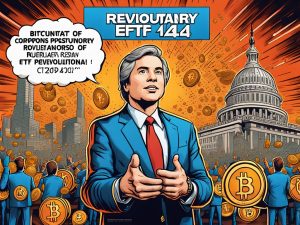A Public Dispute Erupts Over USN Redemption
There’s been a very public disagreement between Wintermute, a maker, and the Near Foundation over the redemption of USN, a stablecoin on the NEAR blockchain that was sunsetted after it depegged last year. Wintermute CEO Evgeny Gaevoy aired his grievances on Twitter, accusing the Near Foundation of backtracking on a redemption deal after helping FTX bankruptcy estate liquidate 11.2 million USN.
Gaevoy alleged that Near Foundation refused to honor the redemption, offering only 20% of the total amount. He stated that Wintermute is considering legal action after suffering “direct harm” and speculated about the reasons behind the backtracking.
NEAR Foundation Responds
The NEAR Foundation disputed Gaevoy’s account in a written statement to The Block, arguing that Wintermute was interested in arbitraging a system designed to compensate ordinary users for profit. The foundation claimed that Aurora did not have full information about the USN tokens Wintermute wanted to redeem and only confirmed “that a large redemption could be facilitated in theory.” When Aurora learned that the tokens being redeemed were connected to Alameda Research, they had concerns about potential AML/KYC issues arising from the history of those funds.
Wintermute’s redemption request also “was inconsistent with the original spirit and intent of the program,” according to NEAR Foundation.
USN Depgged Last Year
Last October, USN lost its peg due to extreme market conditions and a code deficiency that led to “some double-minting” of USN. To make users whole and avoid a Terra/Luna-like collapse, the foundation pledged to fill a $40 million gap in reserves by providing the money to Aurora, which was made responsible for compensating users. According to Igor Stadnyk, founder and CEO of blockchain startup INC4, USN’s design initially had been very similar to UST (Terra), as it was an algorithmic stablecoin pegged to NEAR.
Hot Take: The Implications
The public dispute between Wintermute and the Near Foundation illustrates the complexities involved in dealing with stablecoins and their redemption processes. It highlights potential issues surrounding transparency, accountability, and conflicting interests within blockchain ecosystems. As stablecoins continue to grow in popularity, regulatory oversight and industry standards will be essential in addressing these challenges moving forward.





 By
By
 By
By
 By
By
 By
By
 By
By
 By
By